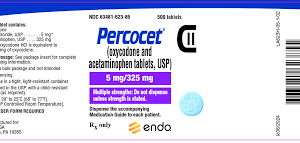Description
Combogesic IV Injection is an intravenous formulation of the combination drug acetaminophen and hydromorphone, intended for the management of moderate to severe pain in hospitalized patients. The combination of acetaminophen, a non-opioid analgesic, and hydromorphone, a potent opioid, works synergistically to provide effective pain relief, particularly when other pain management strategies are insufficient or unsuitable.
Active Ingredients and Mechanism of Action
- Acetaminophen:
Acetaminophen, also known as paracetamol, is a widely used non-opioid analgesic and antipyretic (fever reducer). It works by inhibiting cyclooxygenase (COX) enzymes in the central nervous system, particularly COX-2, to reduce the production of prostaglandins. Prostaglandins are chemicals that contribute to pain, inflammation, and fever. While acetaminophen has limited anti-inflammatory effects compared to NSAIDs, it is highly effective in managing mild to moderate pain and reducing fever. - Hydromorphone:
Hydromorphone is a potent opioid analgesic that works by binding to opioid receptors in the brain and spinal cord. This binding blocks the transmission of pain signals, leading to a reduction in the perception of pain. Hydromorphone is commonly used in the treatment of moderate to severe pain, and it has a stronger effect compared to morphine. It also has sedative properties that may help improve patient comfort.
How It Works
Combogesic IV Injection combines acetaminophen and hydromorphone to deliver powerful pain relief through both central and peripheral mechanisms:
- Acetaminophen reduces pain and fever by inhibiting prostaglandin synthesis in the brain and spinal cord, helping to manage mild to moderate pain.
- Hydromorphone targets opioid receptors, providing more significant relief for moderate to severe pain. This combined effect allows for improved pain management, especially in cases where a single agent would not be sufficient.
By using both a non-opioid and an opioid analgesic, Combogesic IV Injection helps to optimize pain management, improve patient comfort, and potentially reduce the amount of opioid required.
Common Uses
Combogesic IV Injection is typically use for short-term, severe pain management in a hospital or clinical setting. Some of the primary indications for this medication include:
- Postoperative Pain: It is often administer following surgery to manage acute pain, particularly after major surgeries such as abdominal or orthopedic procedures.
- Trauma-related Pain: Combogesic IV Injection may be use for the management of pain following traumatic injuries, fractures, or severe sprains.
- Cancer Pain: It can be employ to manage pain in cancer patients who require stronger analgesia to control moderate to severe pain.
- Acute Pain: It is use in situations where rapid, effective pain relief is necessary, such as in emergency care settings or during labor and delivery.
Dosage and Administration
Combogesic IV Injection is administere intravenously by healthcare professionals, typically in a hospital or clinical setting. The exact dosage and frequency will depend on the patient’s individual needs, the severity of the pain, and their response to the medication.
- Typical Dosage: The dose will be determine by the healthcare provider, who will adjust it base on the patient’s pain intensity, age, medical history, and other factors. Usually, it is give in divid doses to provide continuous pain control.
- Administration Rate: Combogesic IV Injection is typically administer over a period of time (e.g., 15 to 30 minutes) to ensure the drug is delivered at a controlled rate.
- Maximum Dosage: The healthcare provider will determine the maximum allowable dose based on the patient’s response, aiming to balance effective pain relief with safety.
Possible Side Effects
Like all medications, Combogesic IV Injection can cause side effects. The most common side effects include:
- Drowsiness or Sedation: Hydromorphone may cause drowsiness or sedation, which can affect the patient’s ability to perform tasks requiring focus, such as operating machinery.
- Nausea or Vomiting: Both acetaminophen and hydromorphone can cause gastrointestinal distress, leading to nausea or vomiting in some patients.
- Constipation: Hydromorphone, like other opioids, can cause constipation, which may require additional management.
- Respiratory Depression: A serious side effect of hydromorphone is respiratory depression, which can slow or stop breathing. This is a particular risk with higher doses or in patients who have pre-existing respiratory conditions.
- Hypotension (Low Blood Pressure): Both acetaminophen and hydromorphone can cause hypotension in some patients, which may lead to dizziness, fainting, or lightheadedness.
- Allergic Reactions: Although rare, allergic reactions to either acetaminophen or hydromorphone can occur. Symptoms of an allergic reaction may include rash, itching, swelling, or difficulty breathing.
Serious side effects that require immediate medical attention include:
- Severe Respiratory Depression: Difficulty breathing or shallow breathing, particularly after a dose increase.
- Liver Damage: Due to acetaminophen, prolonged or excessive use can lead to liver damage, especially in those with pre-existing liver conditions.
- Severe Allergic Reactions: Signs of a severe allergic reaction include swelling of the face, lips, or throat, difficulty breathing, or a rash.
Precautions and Warnings
Before using Combogesic IV Injection, the healthcare provider will consider several important factors:
- Opioid Dependence and Tolerance: Hydromorphone is an opioid, and long-term use can lead to tolerance (requiring higher doses for the same effect) and physical dependence. Healthcare providers will use the lowest effective dose for the shortest period necessary to manage pain.
- Liver Function: Due to the presence of acetaminophen, patients with liver disease or those who consume alcohol heavily should be carefully monitor to avoid the risk of liver damage.
- Kidney Function: Both hydromorphone and acetaminophen can impact kidney function, particularly in patients with pre-existing kidney disease.
- Respiratory Disorders: Patients with respiratory conditions, such as asthma or COPD, may be more sensitive to the effects of hydromorphone, including respiratory depression.
- Pregnancy and Breastfeeding: Hydromorphone can cross the placenta and affect a developing fetus, and it may also be excret in breast milk. It should be use during pregnancy only if clearly needed, and breastfeeding mothers should consult their doctor before use.
- Drug Interactions: Combogesic IV Injection may interact with other medications, including other CNS depressants (e.g., benzodiazepines), sedatives, and muscle relaxants, increasing the risk of respiratory depression or sedation.
Conclusion
Combogesic IV Injection is a potent combination of acetaminophen and hydromorphone, used in clinical settings to manage moderate to severe pain effectively. The combination of these two medications provides rapid, comprehensive pain relief, making it suitable for use after surgery, traumatic injuries, or cancer-related pain. However, due to the opioid content, it carries a risk of side effects such as respiratory depression, sedation, and dependency. As such, it should only be administered under the supervision of healthcare professionals who can monitor and adjust the dosage as necessary to ensure patient safety.






Reviews
There are no reviews yet.